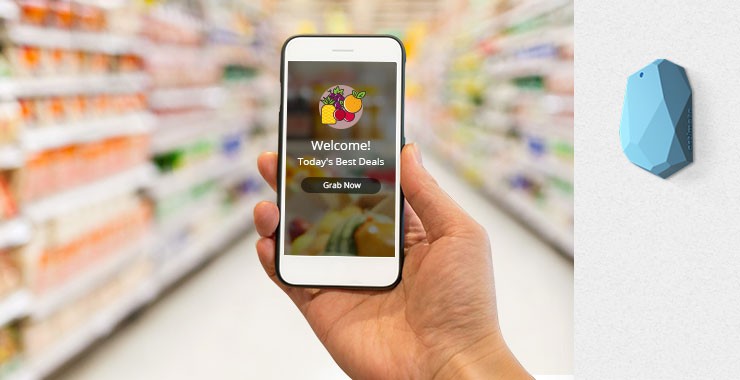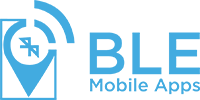iBeacon : Everything You Need to Know
- by BLE Mobile Apps

iBeacon is the protocol introduced by Apple at World Wide Development Center in 2013 and is compatible with the hardware that has Bluetooth Smart/BLE. It is providing great opportunities for marketers and retailers as it helps to link their in-store shopping experiences with the online service through smart-phones; thus blurring up the lines between digital and physical space. It changes the way people shop in the stores and revolutionize how retailers collects data and communicates with the shoppers.
But, how it exactly works? Here is something that you need to know…
What are iBeacons all about?
iBeacon is a wireless technology that uses bluetooth low energy to provide location based information to iOS devices. With the help of iBeacon, mobile apps can understand user’s physical location and accordingly delivers the hyper-contextual content to the user. Hence, this enables the smart-phones and tablets to provide personalized experience by performing actions for the users who is near to the beacon.
What is BLE?
Bluetooth Low Energy (BLE) is the personal area network technology that is used for transmitting data over short distances. As the name suggest, it consumes less energy, can be cost-effective and maintains the communication range to that of classic Bluetooth.
BLE broadcasting is a one-way communication method; it advertises small packets of data which are broadcasted at regular intervals through radio waves. These small packets are used by the nearby smart device which then triggers push messages, app actions and prompts for the users that are near beacons. BLE technology is ideal for indoor location tracking and proximity marketing as it typically broadcast messages at the range between 10-30 meters.
How does iBeacon uses BLE communication
When it comes to iBeacon, it has standardized format for BLE advertising and will be transmitting by using four fields in the packets.
- UUID: This consists of 128 bit integer and is used to distinguish the related beacons in the network between the large groups of different beacons.For instance: If Nike has maintained a chain of beacon in mall, all Nike beacon would share the same UUID and this would enable NIKE’s dedicated smart-phone app to know which beacon advertisement came from Nike brand.
- Major: It consists of 16 bit integer and is used to distinguish group of beacons between larger groups. For instance: if Nike has 3 beacons in Macys, all 3 would have same major. This enables the customers to know exactly in which store the customer is in.
- Minor: This consists of 16 bit integer and is used to distinguish individual beacon. For instance, a beacon of Nike at the front of the Macys would have its own unique Minor. This enables Nike’s dedicated mobile app to know where exactly the customer is in the store.
- Tx Power: This determines the signal strength at 1m from the beacon and helps to know the proximity between 2 devices. This must be hardcoded in advance and must use this as the baseline to give the rough distance estimate.
Misconceptions about iBeacon
- Tracks people: It never tracks people but it keeps on advertising their presence. It’s the device that receives the signals and responds their presence. Beacons are not aware that device has pulled up the signal or not but the relevant mobile app on the device can recognize this and tracks the users.
- Pushes Content to the device: It just advertises its presence by transmitting the data regarding the identifiers but it never pushes the content to the device. It is the mobile app which is responsible for identifying beacon and providing relevant content to the user.
When iBeacon triggers location based action?
When user enters/leaves the range!
The relevant mobile app shows special offers when user is near the store or in any aisle of the store. To determine the accurate location of the customer, brand needs more beacons and to simply locate the customer near the store, one beacon is enough.
Some challenges using iBeacon
- Your mobile app might detect the beacon, find the second one and then get confused between both
- Your mobile app might get confused between the different distances which is near
- Delays in receiving lock screen notifications
- Connectivity is required and may turn out to become very expensive for the user
Does iBeacon run only on iOS device?
Existence of iBeacon is just because of Apple, but since it is based on BLE, it can be supported by other vendors or operating system such as Android (but works with a slight difference).
iBeacon can wake up apps on iOS even if the app is not running and on the on other hand, on Android, you need to either have the app open or it needs to run in the background. So, it can be used for Android, they just work differently when compared to iOS.
Why iBeacon mobile app development is such a big deal?
With an iBeacon network, any brand, retailer, app or platform will be able to know the precise location of the customer. This provides an opportunity to get the data to the retailer by sending hyper-contextual meaningful messages and advertisements on the smart phones. Marketers must ensure that they keep a track on what offers were followed up, examines the data of the time spent in the store and much more. With this data, the retailers can send the messages to the right person at the right time and right place.
Where it can be implemented?
- Retail
- Transportation
- Service Industry
- Home Automation
- Education
- Entertainment
- Museum
- Theme Park
Conclusion
iBeacon is a revolutionary technology which continues to create great user experience, personalization and helping businesses to achieve the ultimate objective of driving sales and gaining revenue.
We are leading iBeacon App Development Company with the passionate team of developers, designers and creators building iBeacon apps that helps organizations to achieve their business goals. Feel free to contact us to learn more about iBeacon.
